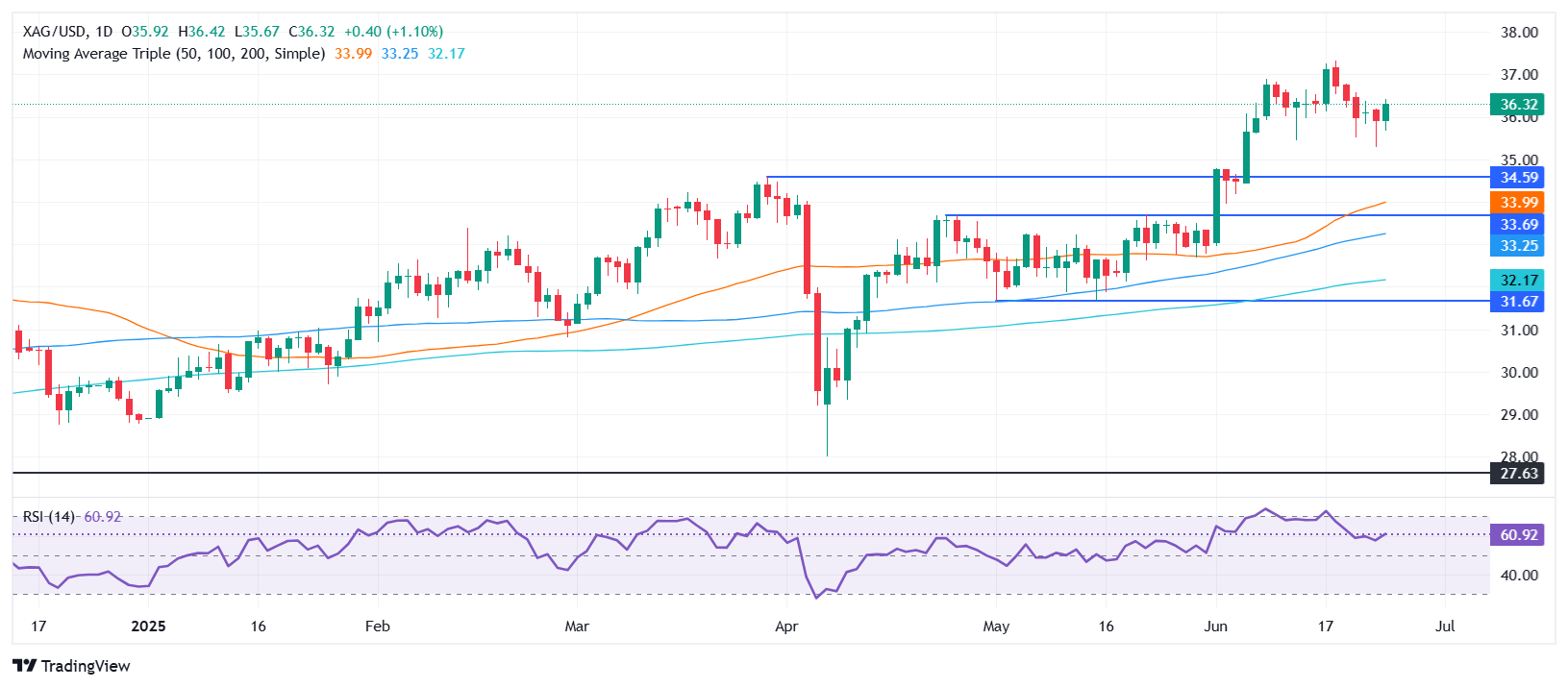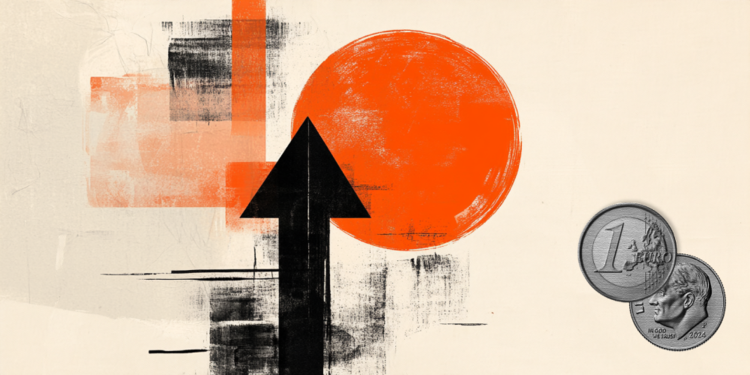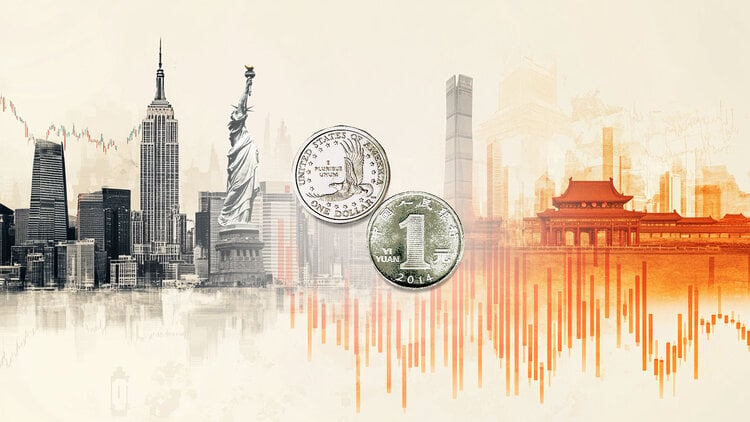- La Plata bounces from $ 35.68, trades about $ 36.25 while the end of the month weigh on the US dollar.
- A “morning star ‘is formed; The RSI remains positive, pointing out a potential rising impulse.
- Resistance at 36.42 $ and 37.31 $; Support at $ 35.29 and 50 days at $ 33.95.
The price of silver advances almost 1% on Wednesday, while the US dollar depreciates due to the end of the month, along with the expectations of falling from the US treasure yields. At the time of writing, the XAG/USD is traded at 36.25, after bouncing from minimum daily $ 35.68.
XAG/USD price forecast: technical analysis
Although the silver fell to a new minimum of two weeks of $ 35.29 last Friday, the gray metal found offers, which pushed the price in cash above $ 36.00 and formed an upward pattern of three candle graph called ‘Matutina Star’. In spite of this, the relative force index (RSI) remained flat in upward territory, suggesting that the torque is neutral to rise. If the XAG/USD exceeds key levels of resistance, then the upward trend could be resumed.
The first key area of interest will be the maximum of June 20, $ 36.42. Once surpassed, the next stop would be 37.00 $, followed by the maximum of several years of 37.31 $.
On the other hand, if the XAG/USD falls below the minimum of June 24, $ 35.29, a setback is expected to the simple mobile average (SMA) of 50 days in 33.95 $.
XAG/USD – Diario price chart

FAQS SILVER
Silver is a highly negotiated precious metal among investors. Historically, it has been used as a value shelter and an exchange means. Although it is less popular than gold, operators can resort to silver to diversify their investment portfolio, for their intrinsic value or as a possible coverage during periods of high inflation. Investors can buy physical silver, in coins or bullion, or negotiate it through vehicles such as the funds quoted in the stock market, which follow their price in international markets.
Silver prices can move due to a wide range of factors. Geopolitical instability or fears of a deep recession can cause the price of silver to shoot due to its safe refuge status, although to a lesser extent than that of gold. As an asset without performance, silver tends to climb with lower interest rates. Its movements also depend on how the US dollar (USD) behaves, since the asset is quoted in dollars (XAG/USD). A strong dollar tends to maintain the price of silver at bay, while a weaker dollar probably drives rising prices. Other factors such as investment demand, mining – silver supply is much more abundant than gold – and recycling rates can also affect prices.
Silver is widely used in the industry, particularly in sectors such as electronics or solar energy, since it has one of the highest electrical conductivities of all metals, surpassing copper and gold. An increase in demand can increase prices, while a decrease tends to reduce them. The dynamics in US economies, China and India can also contribute to price fluctuations: for the US and particularly China, its large industrial sectors use silver in several processes; In India, the demand for consumers for precious metal for jewelry also plays a key role in pricing.
Silver prices tend to follow gold movements. When gold prices go up, silver typically follows the same path, since their status as shelter is similar. The gold/silver ratio, which shows the number of ounces of silver necessary to match the value of an ounce of gold, can help determine the relative valuation between both metals. Some investors may consider a high ratio as an indicator that silver is undervalued, or that gold is overvalued. On the contrary, a low ratio could suggest that gold is undervalued in relation to silver.
Source: Fx Street
I am Joshua Winder, a senior-level journalist and editor at World Stock Market. I specialize in covering news related to the stock market and economic trends. With more than 8 years of experience in this field, I have become an expert in financial reporting.







